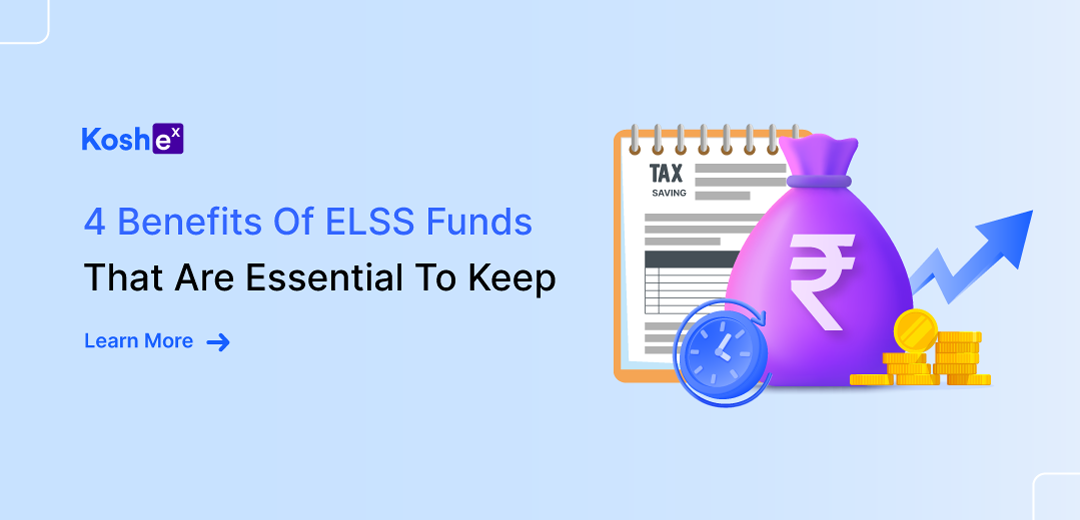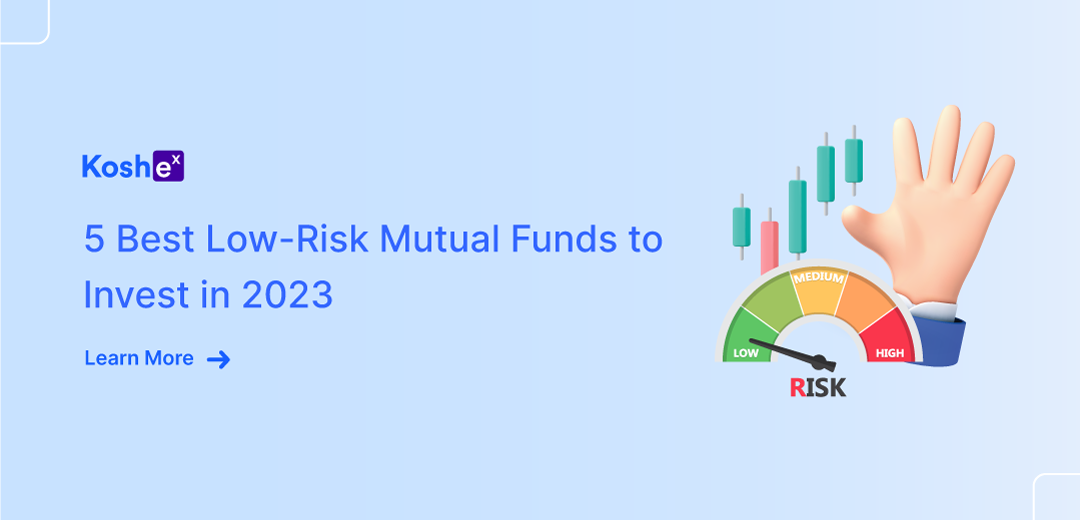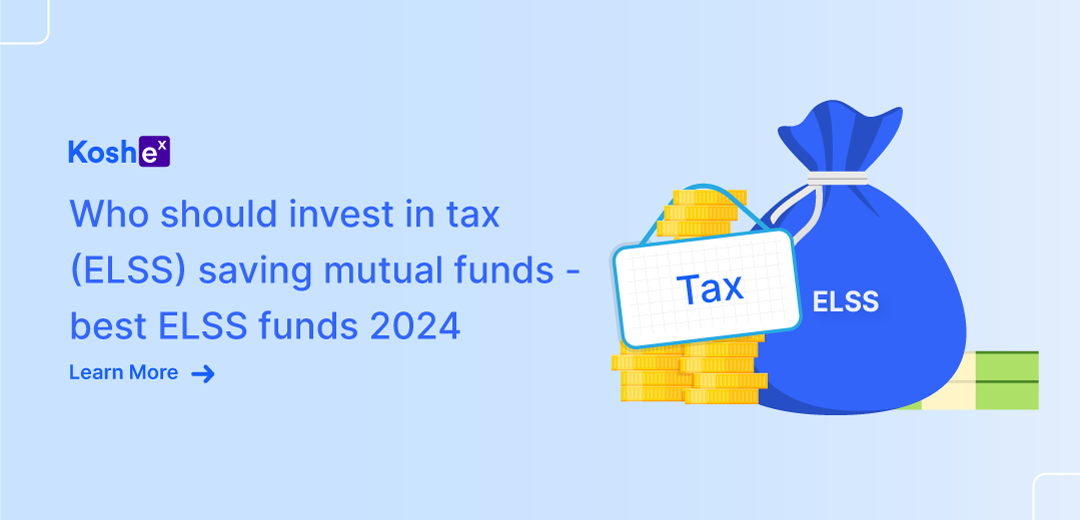4 Benefits of ELSS Mutual Funds
Equity Linked Saving Schemes (ELSS) have remained a popular investment option in India, primarily because of their dual advantage of potential wealth creation and tax-saving benefits. ELSS mutual funds combine the benefits of equity investment with tax deductions under Section 80C of the Income Tax Act, of 1961. This makes them an attractive choice for investors who not only wish to generate wealth but also save taxes.
Let’s understand the intricacies of ELSS funds and the four peculiar benefits that make them an investor’s and taxpayer’s preferred choice with Koshex – an online platform that recommends investment options based on your unique needs and allows you to invest in mutual funds, digital gold, and smart deposits.
What Are ELSS Mutual Funds?
ELSS funds, also known as Equity Linked Savings Scheme funds, are mutual funds that invest primarily in equities and equity-related instruments. These funds are eligible for tax deductions under Section 80C of the Income Tax Act, of 1961. Investors are allowed to claim deductions of up to Rs. 1.5 lakhs each financial year from their gross total income. That’s why they are also called tax-saving mutual funds.
ELSS mutual funds come with a mandatory lock-in period of 3 years, which is the shortest among almost all the tax-saving instruments under Section 80C. With that in mind, let’s explore the four benefits of ELSS funds that make them an essential consideration for investors.
4 Major Benefits of ELSS Funds
Investing in ELSS mutual funds offers distinctive advantages. Here are some of the main benefits of investing in ELSS mutual funds:
1) Significant Tax Savings
The most prominent benefit of the ELSS mutual funds is their ability to offer significant tax-saving benefits to investors. By investing in ELSS funds, you can claim deductions of up to Rs. 1.5 lakhs from your gross taxable income during each financial year. This deduction can help reduce the overall tax liability, thus allowing you to save a significant amount of money while simultaneously growing your investments.
2) Lock-in Period
One of the distinguishing features of ELSS mutual funds is the relatively short lock-in period of just three years. Section 80C of the Income Tax Act, 1961 provides deduction by investing in multiple investment avenues. In those investments, ELSS mutual funds come with a significantly lower lock-in period as compared to other tax-saving instruments like Public Provident Fund (PPF), National Savings Certificate (NSC), and tax saver fixed deposits, which come with lock-in periods ranging from 5 to 15 years.
The shorter lock-in period of ELSS funds provides investors with more liquidity and flexibility to access their funds after the completion of the lock-in period. This liquidity feature can be advantageous for those who require greater financial flexibility.
3) Higher Returns
ELSS funds pool money from investors and invest in equity and equity-related instruments. Equities are known to have historically offered higher returns compared to conventional tax-saving instruments. Over the long term, equities have the potential to outperform other asset classes. This makes ELSS mutual funds an attractive option for investors seeking wealth creation along with tax benefits.
However, it is essential to note that equity investments come with inherent market risks, and you should always remember that past performance does not indicate future results. Diversifying your investment portfolio and assessing your risk tolerance is crucial before making investment decisions.
4) Multiple Investment Options
ELSS tax-saving mutual funds come with various investment options. For instance, you can invest in both growth and dividend plans, thus allowing you to choose a strategy that aligns with your financial goals. The growth plan reinvests the profits into the fund, unlocking the compounding benefits. Therefore, your returns magnify significantly in the long run.
On the other hand, the dividend plan pays out dividends to investors at regular intervals. Moreover, investors can start investing in ELSS funds with a relatively small amount, as low as Rs. 500 per month. This makes them accessible to a wide range of individuals.
In a Nutshell
ELSS mutual funds offer multiple benefits in a single instrument. This includes tax-saving benefits, the potential for higher returns, and a shorter lock-in period compared to other tax-saving instruments. The ability to claim deductions under Section 80C while investing in equity-oriented instruments makes ELSS funds an attractive option for tax-efficient wealth creation.
Koshex is an online investment platform that allows you to invest in more than 5000+ mutual funds. You can skim through multiple ELSS mutual funds and select the right one that aligns with your investment goals and preferences. You can also get help from our experts in finding the right ELSS fund. Each ELSS mutual fund invests in different equities, making it important for you to invest only after analyzing the underlying equities of the companies. Sign up with Koshex and start your investment journey today!
Frequently Asked Questions
Q: Can I invest more than Rs. 1.5 lakhs in ELSS funds to claim tax deductions?
You can invest any amount you desire in the ELSS tax-saving mutual funds. However, the maximum deduction allowed under Section 80C of the Income Tax Act, 1961 for ELSS investments is limited to Rs. 1.5 lakhs in a financial year. Investing more than this amount in ELSS funds will not provide any additional tax benefits.
Q: Is the entire maturity amount of ELSS mutual funds tax-free?
While ELSS mutual funds have a mandatory lock-in period of three years, the entire maturity amount is not tax-free. Gains made by investing in ELSS funds shall be treated as capital gains. These are subject to long-term capital gains tax if they exceed Rs. 1 lakh in a financial year. Currently, the long-term capital gains tax rate for equity funds, including ELSS funds, is 10% without indexation benefit.
Q: Can I withdraw money from ELSS funds before the completion of the lock-in period?
ELSS funds have a mandatory lock-in period of 3 years from the investment date. You cannot withdraw money from ELSS funds before the completion of this lock-in period. After the lock-in period, you have the flexibility to redeem your investments partially or entirely as per your requirements.
Q: How do I choose the right ELSS fund for my investment?
While selecting an ELSS mutual fund, you should consider various factors such as the fund’s historical performance, expense ratio, fund manager’s track record, and the fund’s investment principles. Further, you should align the fund’s investment objective with your financial goals and risk tolerance to make an informed investment decision. You should prefer consulting a financial advisor to choose the right ELSS fund that best suits your investment goals and requirements.









Leave a Comment